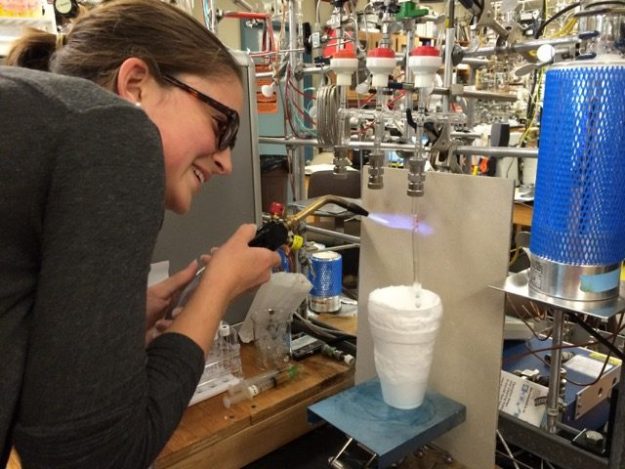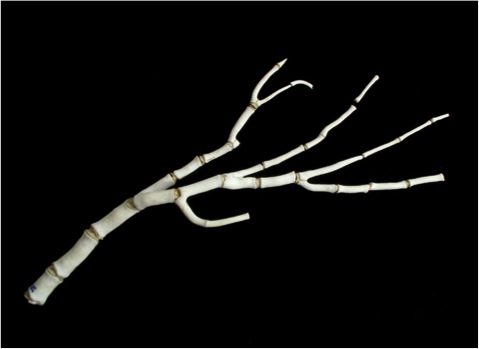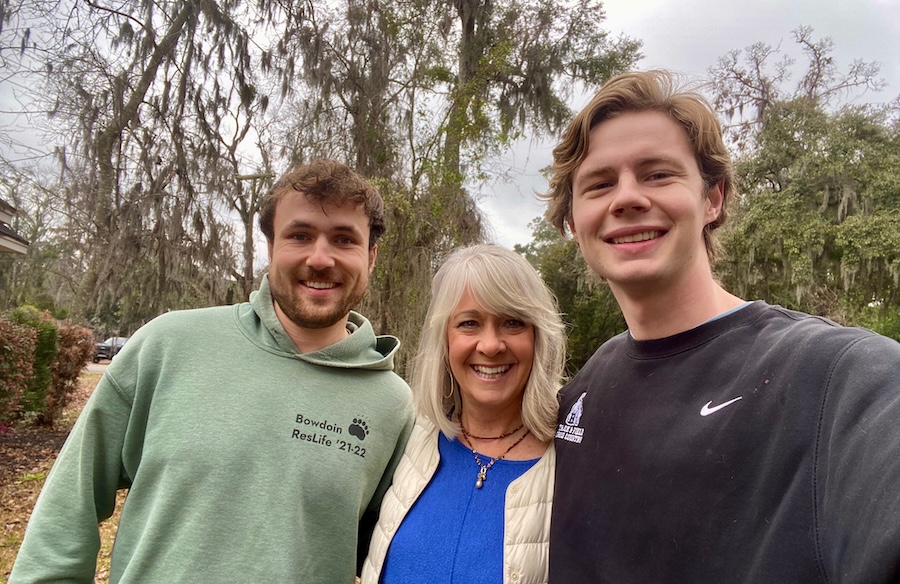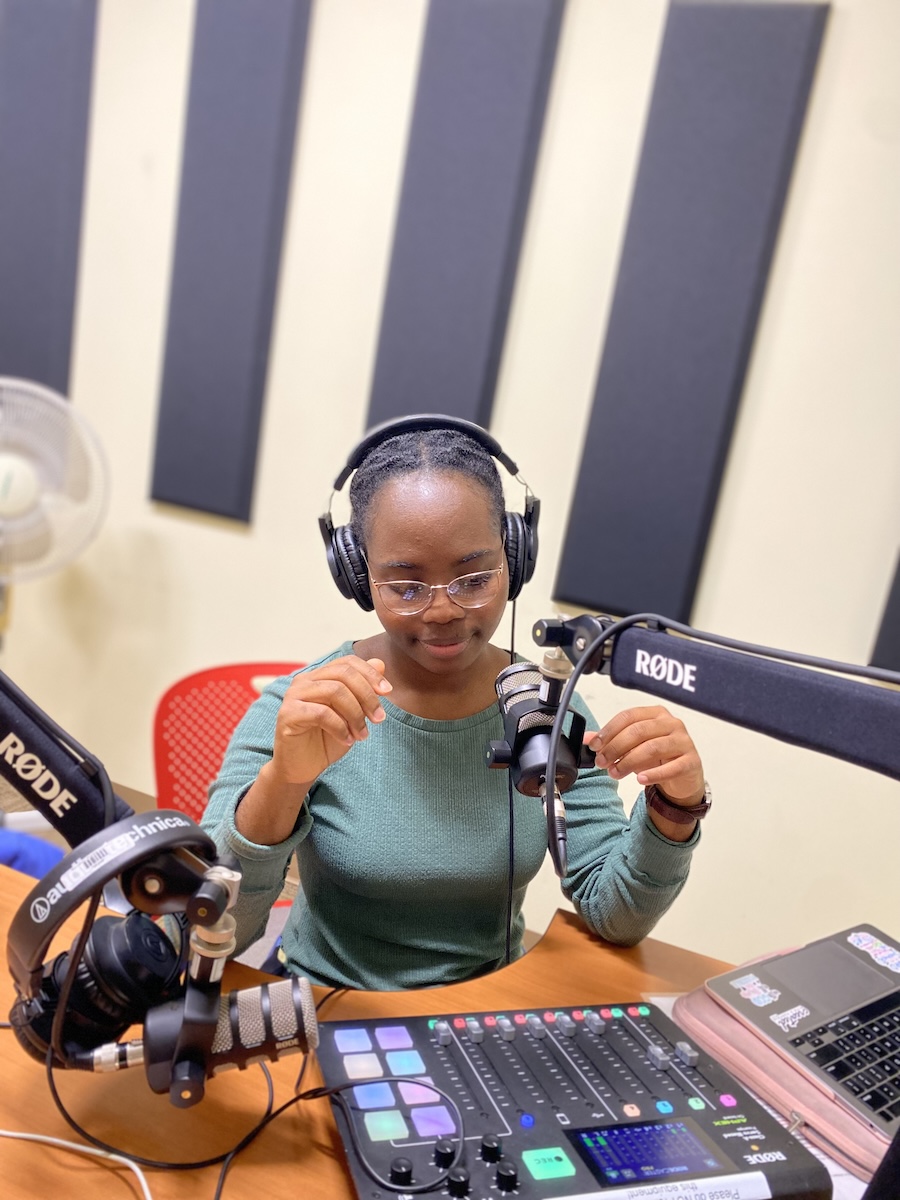Frenkel ’16 Paper on Deep Sea Coral Published in Academic Journal
By Tom Porter
Megan Frenkel ’16 is making waves in the world of ocean science. Frenkel, who changed her name from Freiberger last year, is the lead author on a paper recently published in the journal Deep Sea Research I. Frenkel, a chemistry and earth and oceanographic science major, became a Clare Boothe Luce Research Fellow as well as a guest student at the Woods Hole Oceanographic Institution. She’s now a graduate student at Columbia University. The project on which her paper is based was funded by a National Science Foundation Grant to Frenkel’s supervisor at Bowdoin, Assistant Professor of Earth and Oceanographic Science Michèle LaVigne.
Research for her paper, “Quantifying bamboo coral growth rate nonlinearity with the radiocarbon bomb spike: A new model for paleoceanographic chronology development,” was done with the help of co-author Hannah Miller ’17; LaVigne served as senior author. Also involved in the project were colleagues Tessa Hill at UC Davis, and Ann McNichol and Mary Lardie Gaylord at the National Ocean Sciences Accelerator Mass Spectrometry facility (NOSAMS) at Woods Hole.
LaVigne said Frenkel successfully used radiocarbon dating techniques to reconstruct how corals grow, “and she found out that the growth rates of these corals slow down as they get larger. Previously it had been thought they grew at a constant rate. This is a critical finding for paleoceanographers who use these corals as climate archives,” she continued, “as it allows us to interpret our climate records with a more precise timescale. And because this advances our understanding of how bamboo corals grow, it helps us measure how quickly deep sea coral habitats might recover from damage.”

LaVigne said Frenkel and Miller impressed her collaborators on this project with the quality of their work at NOSAMS through to the writing of the paper. “When Meg presented her thesis at the fall meeting of the American Geophysical Union during her senior year, several of my colleagues in the field assumed that she was presenting her Ph.D. research. Meg and Hannah also earned the top student poster award when they presented this project to an international audience at the 2016 International Sclerochronology Conference last summer.”
Frenkel said the paper evolved a lot over time, from some initial results she presented as part of her honors project. “It feels great to have a final product come out of these two years of work. As my first paper, it is certainly an academic, professional and personal accomplishment.
“I’m proud of this work and am hopeful that the community of scientists studying bamboo corals will find it useful.” Frenkel said the work also allowed her to carry out research at other institutions, connect with other scientists, “and begin to see myself as a ‘real’ scientist, ultimately leading me to pursue my Ph.D. program at Columbia University.
“Most of all,” she said, “I feel incredibly fortunate to have found not only an inspiring project, but a fabulous teammate in Hannah (Miller) and an irreplaceable advisor in Michèle (LaVigne.) I’m so grateful to both of them, the EOS Department, my coauthors, and everyone else who offered comments, help and encouragement along the way.”



